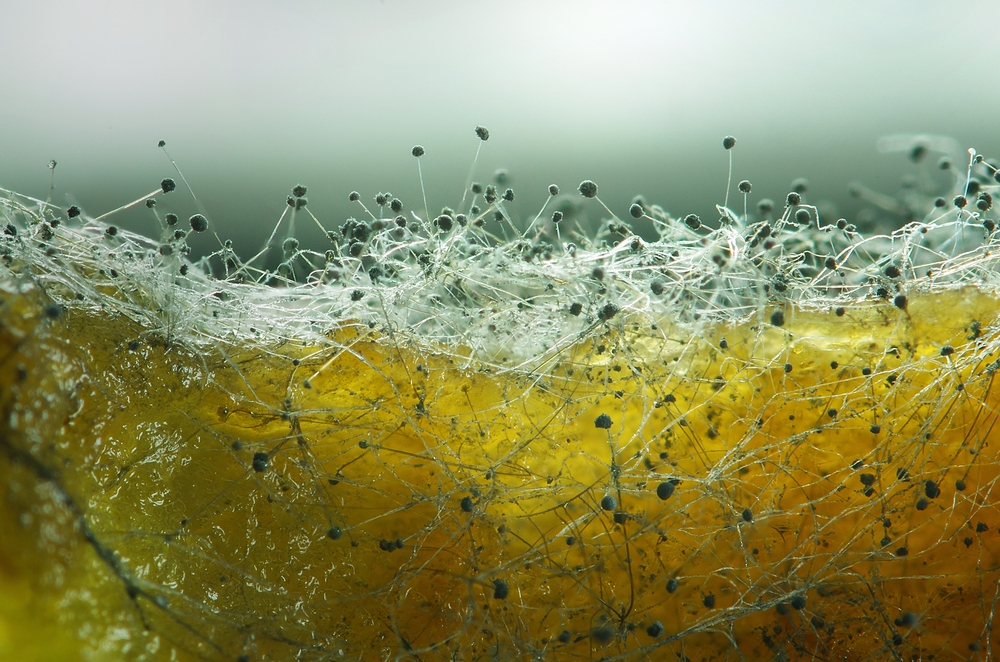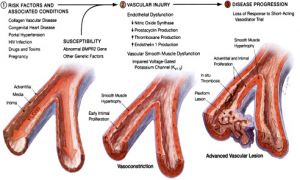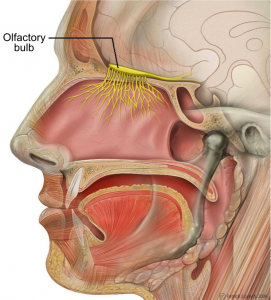How Mold In Your Environment Can Ruin Your Health And Effect Your Brain
Mold is something very few people think about or take seriously.
Many doctors and even specialists refuse to acknowledge that mold biotoxin accumulation could be a reason for many of their patient’s health issues. They do not understand the biochemical cascade this can set off in sensitive individuals and this creates a lot of frustration amongst those who are severely affected and cannot find anyone who will listen to and help them.
But I believe it’s a hidden time-bomb in many buildings, either waiting to go off or already making you sick. And I’m not alone with many other forward-thinking experts putting this just as high on their radars as I do.
So, how do you know whether this may be something affecting you?
Let’s first look at some of the most common symptoms associated with mold exposure:
- Headaches
- Chronic sinus problems
- Cough or lung problems
- Brain fog
- Mood swings
- Joint pains
- Many explained symptoms that do not respond to standard treatments
- Drug resistant Staph infections
Do any of these symptoms sound familiar?
If so, you may have been or are currently exposed to mold, or have accumulated biotoxins from mold that may be preventing you from getting better. This is sometimes referred to as Biotoxin Illness or Mold Toxicity Syndrome, but also makes part of a bigger syndrome called Chronic Inflammatory Response Syndrome or CIRS for short. CIRS may be caused by other factors and organisms as well which is why we get subtypes, but I’m not going to go into that in this article.
You can also listen to the podcast I did with FX Medicine below on CIRS:
So back to mold.
Now think carefully. Are you aware of any mold in your home, work environment or school, or do your symptoms get worse when you spend time in certain buildings? It may be hiding in places you don’t often look at. Some common sources of mold in the home environment include:
- Books and papers in attics or basements that got wet over time
- Attic condensation
- Toilet seal leaks
- Shower walls that haven’t been sealed properly
- Behind washing machines
- Carpets, curtains, pillows or fluffy children’s toys through water or food spills
Whilst we’re on the subject of hidden mold, I’m going to take this opportunity to clear up some misconceptions about mold:
- Just because you can’t see mold, doesn’t mean that it’s not in your environment. Mold spores can be settled in dust or circulate through the air.
- Painting over mold will not kill or seal it up.
- Bleach and other chemicals may kill mold but even the dead mold may be dangerous
- Before you consider clean-up you should detect and repair the moisture source first. Otherwise mold will return.
- So it goes without saying that the best way to prevent mold is to remove the water and moisture sources.
THE ROLE OF GENE MUTATIONS IN MOLD TOXICITY SYNDROME
An important question may be why some people only have mild symptoms such as chronic sinus problems while others develop CIRS and get really sick. Part of the answer lies in our genes. And interestingly enough it involves the same family of genes that include the coeliac genes (related to severe gluten intolerance), namely the HLA DR/DQ genes.
It has been found that those with genetic mutations in HLA DRB1, DQB1, DRB3, DRB4 and DRB5 are more susceptible to getting sick from being exposed to mold. The more mutations, the bigger the risk. This indicates that some people have a clear genetic susceptibility to develop CIRS after being exposed to triggers such as mold.
If we add to that, gene mutations on some of the really important detoxification systems such as SOD (Super Oxide Dismutase) and Glutathione, well, that’s really going to make it hard for those people to clear biotoxins safely and effectively from their system.
I’m really cautious when I say this though because I don’t want to simplify Biotoxin Illness to a set of genes. This would be tremendously foolish and would miss the point completely, but it is important to acknowledge this piece of the puzzle along with all the other information.
HOW DO MOLD BIOTOXINS AFFECT MY LUNGS?
It would make sense that the organ most affected by mold exposure would be the respiratory organs, right? You are breathing in the air containing mold spores and biotoxins and this travels straight into the lungs and sinuses. Within the sinuses it can attach to the olfactory nerve receptors. It is likely that many asthma diagnoses should really be Mold Biotoxin diagnoses.
But anyway…
You can see from the illustration below how chronic inflammatory insults to the lung or pulmonary arterioles can lead to thickening and remodelling of the small blood vessel walls where oxygen exchange takes place. If you are exposed to mold biotoxins or anything else that can upregulate TGF beta-1, and your pulmonary arterioles start looking like this, you will feel as if you are breathing through a straw.
Not a pleasant feeling.
HOW DOES THIS AFFECT MY BRAIN?
As you can see from the image shown here, the olfactory bulb is situated right above the nasal cavity and sends out nerve projections into the nose which is how you pick up smells. As you breath in moldy air containing biotoxins, it is likely that ionophores bind to the olfactory receptors and create chaotic signalling to the rest of the brain.
For the nerds:
We’ll quickly pause here and look at ionophores and what they are.
Biotoxins consist of small, negatively charged molecules that form anion-rings, and it’s these rings that are called ionophores.
Ionophores have a dipole structure which makes them water-soluble on the inside and fat-soluble on the outside.
This allows them to get comfortable and situate themselves into the inner fatty compartment of the cell membrane.
Now they can behave like an ion channel but instead of transporting ions such as potassium, sodium and calcium across the cell membrane, it transports toxins across. In this way it can disrupt cellular function without actually killing the cell.
The presence of these ionophores may activate NFkB and increase the production of cytokines. In less complicated terms, it inflames the brain. This is why you may experience symptoms such as brain fog, memory problems, mood swings, sleep disorder, headaches, anxiety and depression.
By Adamchemik – Own work, Public Domain, https://commons.wikimedia.org/w/index.php?curid=2481326
OK, so we left off at the olfactory receptors.
When these olfactory receptors receive constant and chaotic nerve signals from the biotoxins, this may have a flow-on affect to other brain areas such as the hypothalamus, hippocampus, entorhinal cortex, anterior cingulate gyrus, and eventually the caudate nucleus.
Why is this important?
When brain scans are done using NeuroQuant volumetric data, it shows atrophy of the caudate nucleus in those with CIRS. It means the caudate nucleus is shrinking. Let’s have a look at the many important functions of the caudate nuclei in the brain:
- Motor inhibition
- Directed movements
- Spatial processing
- Executive function
- Goal-directed action
- Working memory
- Learning consolidation
- Deep wave sleep
- Openness to emotional attachment
And guess what other disease conditions are associated with shrinking of the caudate nucleus?
- Alzheimer’s disease
- OCD
- Schizphrenia
Interesting, right?
What happens if you are in fact affected by mold biotoxins and you don’t do anything about it?
- You will most likely get sicker as time passes.
- All symptoms associated with inflammation such as joint pains, headaches, lung and sinus problems will worsen over time.
- You will be given more antibiotic treatments that will be ineffective and just ruin your gut along the way and suppress your immune system.
- Depression and anxiety will worsen as certain areas in the brain continue to be inflamed, and eventually shrink.
- Chronic fatigue and fibromyalgia will set in or get worse.
- Your quality of life will suffer as you have less and less energy or mental drive to be productive, exercise or spend time on hobbies you once loved.
This doesn’t have to be you.
How good would it be to know if this was in fact an important piece of the puzzle in your ill health. If this is identified early on through testing, and appropriate steps are taken to address this, how much different would your life be?
Mold Biotoxin Screens or Tests can be done to see if this pertains to you or your family.
You can also read more in our Resource Section about Mold Biotoxin issues and steps you can take to ‘clean’ your environment.
References:
http://www.survivingmold.com/docs/Berndtson_essay_2_CIRS.pdf
Woodman L, et al. Mast cells promote airway smooth muscle differentiation via autocrine up-regulation of TGF-beta 1. Journal of Immunology. 2008 Oct 1;181(7):5001-5007.
Gascuel J, Lemoine A, et al. Hypothalamus-olfactory crosstalk. Frontiers in Neuroanatomy. 2012 (6):44.
Shoemaker R. Linkage disequilibrium in alleles of HLA DR: differential association with susceptibility to chronic illness following exposure to biologically produced neurotoxins. American Society of Microbiology 2003. (conference peer review).
Rauch SL, Kim H, Makris N, Cosgrove GR, Cassem EH, Savage CR, Price BH, Nierenberg AA, Shera D, Baer L, Buchbinder B, Caviness VS Jr, Jenike MA, Kennedy DN. Volume reduction in the caudate nucleus following stereotactic placement of lesions in the anterior cingulate cortex in humans: a morphometric magnetic resonance imaging study. J Neurosurgery. 2000;93(6):1019-1026.
Bennett S, Grant M, Creese AJ, Mangialasche F, Cecchetti R, Cooper HJ, Mecocci P, Aldred S. Plasma levels of complement C4a protein are increased in Alzheimer’s disease. Alzheimer’s Disease and Associated Disorders. 2012 Oct-Dec;26(4):329-34.









My dog and I suffer.My optometrist discovered I had chronic inflammation. I have vision loss if I don’t take a certain medication every day for the rest of my life..I also have bronchitis and emphysema. My trustee ignored a leak for a year, then igknowledged only the exterior. He disreguarded us and our health. Lied of inspections and resigned.
R
So sorry to hear that Sheila :(.
Mold-related health issues is getting a lot more attention now. It’s such a shame that people like you fell through the cracks. I trust that you are on the road to recovery.
Small amounts of mold around windows and bathroom are fine to humans. Something tells me, that possibly living in a house/building which has had issues with bad water damage or shoddy materials could trigger inflammation issues etc
The reason I say this, is when we were young, we were never aware of symptoms around a moldy banana say.
I also believe mold ideas can be rooted in mental health issues or loneliness. Also possibly linked to pharmaceutical medication withdrawal.
Something has gone wrong somewhere, with weird symptoms .
I agree. Something has gone wrong. I believe we have more factors today that may be impacting the same pathways affected by mold. Thus we are more sensitive to it. There are genetic factors, but also detoxification factors. Mold biotoxins inhibit the activation of our normal detoxification mechanisms which mean we also may not be able to detoxify other substances apart from mold.